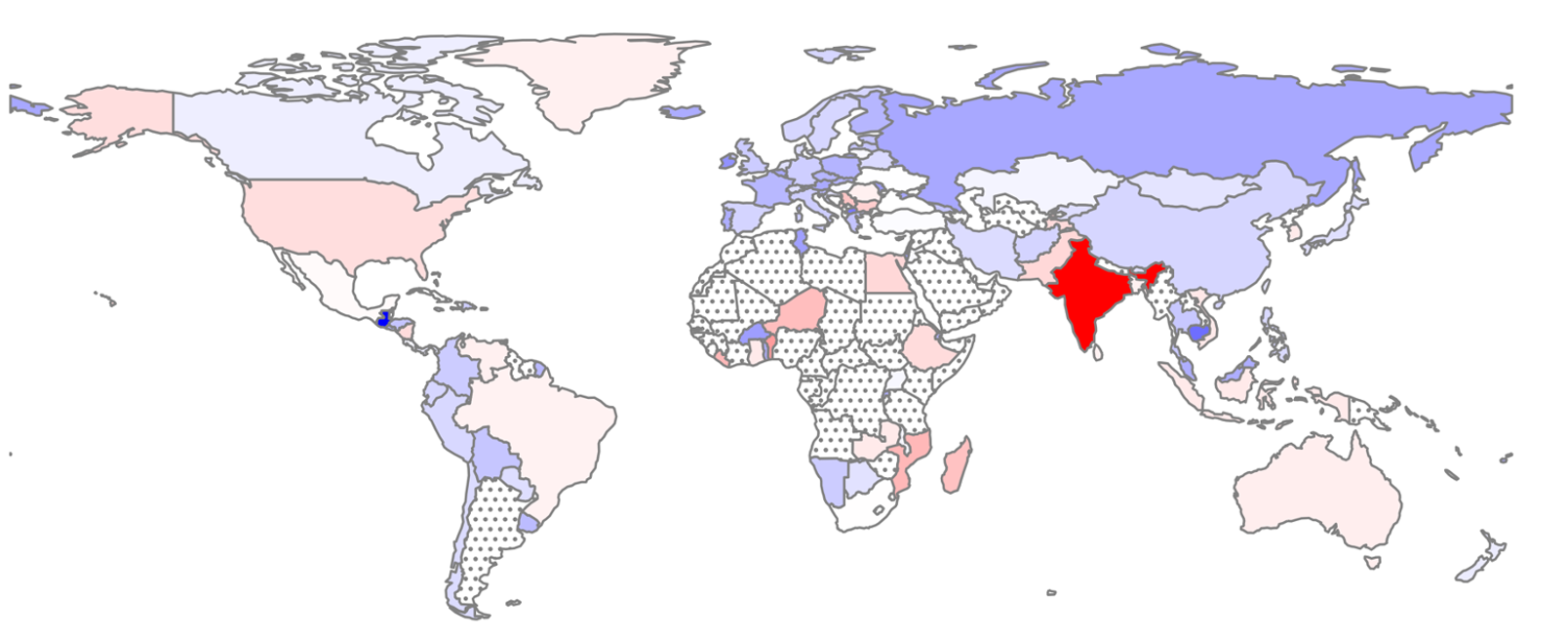
Income inequality trend around the world
The main goal in this exploratory study is to analyze income inequality across the world and its relationship with economic growth and global trade. The study focuses on three main research questions:
1. What is the trend of income inequality across the world in the last decade? Which countries/regions are doing better/worse?
2. What is the relationship between economic growth and income inequality?
3. What is the relationship between exposure to global trade and income inequality? (E.g. Do higher levels of exposure to global trade translate into lower inequality?)
Results show that 71% of the 115 analyzed countries decreased their income inequality between 2009 and 2018. In most of these countries the gini index decreased by 1 percentage point or less each year. European countries further decreased their already low income inequality. Oceania shows a similar behavior. Asia, America and Africa, with countries that have a wide variety of income inequality levels, exhibit a more heterogeneous behavior in inequality changes.
Overall, the majority of nations since 2009 have both decreased income inequality as well as increased real GDP. Countries have different levels of integration with the global economy, with their Trade to GDP Ratio varying from a minimum of 27.5% to a maximum of 387.1%. On average, developed economies are more integrated than developing economies, and Europe and Asia are regions more integrated than Oceania and America.
Data shows no correlation between Trade to GDP Ratio change vs. Gini Index change, suggesting little evidence that more exposure to global trade leads to a country’s reduction in inequality.
A more extensive study is needed as there are likely other variables affecting the inequality beyond exposure to globalization, such as domestic market dynamics, labor market conditions, inflow of capital, and government redistributive policies.
This study does not consider more recent changes (2019-2020) in income inequality due to data availability. Effects of phenomena like the COVID-19 pandemic may likely have a strong effect on income inequality trends around the world.
- Tools: Python (pandas, numpy, matplotlib, seaborn, geopandas).
- Related documents and code: HERE